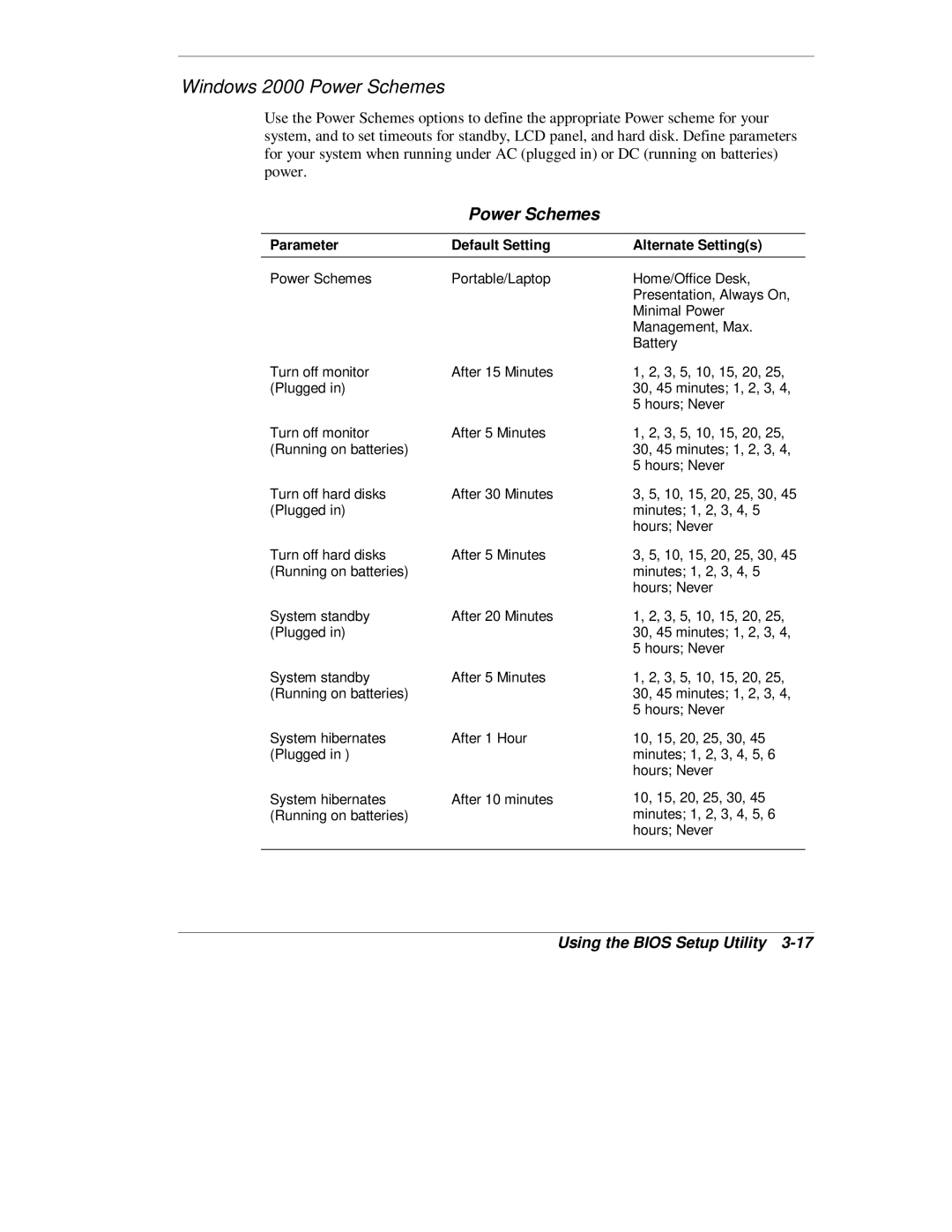
Windows 2000 Power Schemes
Use the Power Schemes options to define the appropriate Power scheme for your system, and to set timeouts for standby, LCD panel, and hard disk. Define parameters for your system when running under AC (plugged in) or DC (running on batteries) power.
Power Schemes
Parameter | Default Setting | Alternate Setting(s) |
Power Schemes | Portable/Laptop | Home/Office Desk, |
|
| Presentation, Always On, |
|
| Minimal Power |
|
| Management, Max. |
|
| Battery |
Turn off monitor | After 15 Minutes | 1, 2, 3, 5, 10, 15, 20, 25, |
(Plugged in) |
| 30, 45 minutes; 1, 2, 3, 4, |
|
| 5 hours; Never |
Turn off monitor | After 5 Minutes | 1, 2, 3, 5, 10, 15, 20, 25, |
(Running on batteries) |
| 30, 45 minutes; 1, 2, 3, 4, |
|
| 5 hours; Never |
Turn off hard disks | After 30 Minutes | 3, 5, 10, 15, 20, 25, 30, 45 |
(Plugged in) |
| minutes; 1, 2, 3, 4, 5 |
|
| hours; Never |
Turn off hard disks | After 5 Minutes | 3, 5, 10, 15, 20, 25, 30, 45 |
(Running on batteries) |
| minutes; 1, 2, 3, 4, 5 |
|
| hours; Never |
System standby | After 20 Minutes | 1, 2, 3, 5, 10, 15, 20, 25, |
(Plugged in) |
| 30, 45 minutes; 1, 2, 3, 4, |
|
| 5 hours; Never |
System standby | After 5 Minutes | 1, 2, 3, 5, 10, 15, 20, 25, |
(Running on batteries) |
| 30, 45 minutes; 1, 2, 3, 4, |
|
| 5 hours; Never |
System hibernates | After 1 Hour | 10, 15, 20, 25, 30, 45 |
(Plugged in ) |
| minutes; 1, 2, 3, 4, 5, 6 |
|
| hours; Never |
System hibernates | After 10 minutes | 10, 15, 20, 25, 30, 45 |
(Running on batteries) |
| minutes; 1, 2, 3, 4, 5, 6 |
|
| hours; Never |
|
|
|
